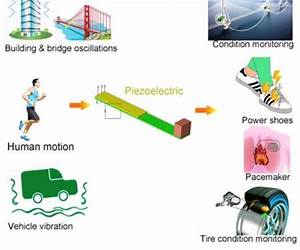Energy Harvesting Using Piezo Electric Material By Anirban Das
EPub Energy Harvesting Using Piezo Electric materials science
But their use must be carefully considered such that parasitic effects that could disrupt the user s gait or endurance are avoided These issues have arisen from previous attempts to integrate power harvesting mechanisms into a shoe such that the energy released during a heal strike could be harvested This study develops a novel energy harvesting backpack that can generate electrical energy from the differential forces between the wearer and the pack The goal of this system is to make the energy harvesting device transparent to the wearer such that his or her endurance and dexterity is not compromised Energy Harvesting Using Piezo Electric MaterialElementary book on the subject Various Authors
| Energy Harvesting Using Piezo Electric Material By Anirban Das |
| English |
| 90 |
| Kindle Edition |
| Book Energy Harvesting Using Piezo Electric material bank |
| Book Energy Harvesting Using Piezo Electric material ui |
| Book Energy Harvesting Using Piezo Electric material handling |
| Book Energy Harvesting Using Piezo Electric materiality |
| Book Energy Harvesting Using Piezo Electric materials science |
| Energy Harvesting Using Piezo Electric Material books |
| Energy Harvesting Using Piezo Electric Material book study |
| Energy Harvesting Using Piezo Electric Material booking |
| Energy Harvesting Using Piezo Electric Material booklet |
| Energy Harvesting Using Piezo Electric Material booker |
| Energy Harvesting Using Piezo Electric Material bookworm |
| Energy Harvesting Using Piezo Electric Material bookkeeping |
| PDF Energy Harvesting Using Piezo Electric material |
| PDF Energy Harvesting Using Piezo Electric material bank |
| PDF Energy Harvesting Using Piezo Electric material ui |
 .#heading[2]
.#heading[2]The past two decades have seen the introduction of a technology that has radically changed the way in which we analyse and control the world around us Born of parallel development in computer architecture and integrated circuit fabrication the microprocessor or computer on chip first became a commercial reality in 1971 with the introduction of the 4 bit 4004 by a small unknown company by the name of Intel Corporation A product of microprocessor development was the microcontroller The same fabrication technique and programming concept that make possible the general purpose microprocessor also yielded the microcontroller The public is however very well aware that something is responsible for all the smart VCRs clocks radios washers and dryers video games telephone microwave TVs automobiles vending machine copier elevators irons and a myriad of other articles that have suddenly become intelligent and programmable Companies are also aware that being competitive in this age of the microchip requires their product or the machinery they use to make those products to have some smarts Over the past few decades the use of portable and wearable electronics has grown steadily These devices are becoming increasingly powerful However the gains that have been made in the device performance have resulted in the need for significantly higher power to operate the electronics This issue has been further Complicated due to the stagnant growth of battery technology over the past decade In Order to increase the life of these electronics researchers have begun investigating methods of generating energy from ambient sources such that the life of the electronics can be prolonged Recent developments in the field have led to the design of a number of mechanisms that can be used to generate electrical energy from a variety of sources including thermal solar strain inertia etc Many of these energy sources are available for use with humans.